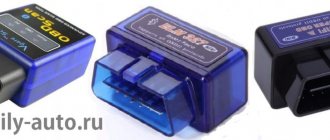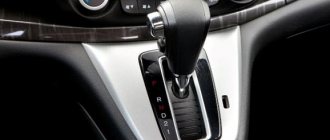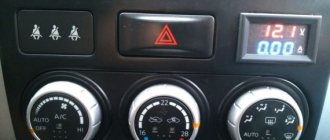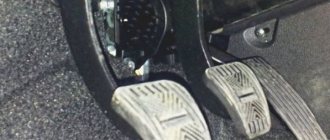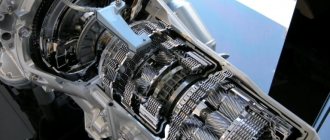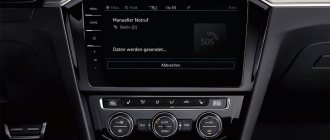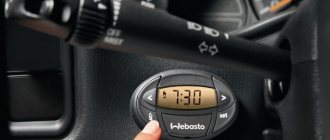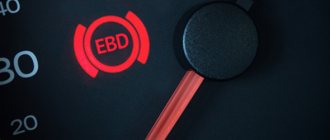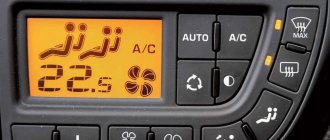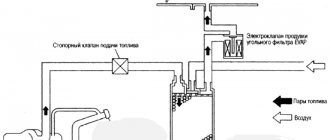According to the law of the Russian Federation, children can be transported in a car only in special restraints, the level of safety of which is influenced not only by their quality, but also by the reliability of the fixation. Usually the device is attached using a seat belt, but there is a chance that parents will install it incorrectly. In the event of a collision or sudden braking, this threatens the health and life of the child. This is why Isofix was developed and has been used worldwide since 1997. What are the advantages of such a system and are all car seats equipped with it?
Description of the Isofix fastening system
The Isofix fastening system is a universal means of installing a car seat and securing a child in it. It is reliable and simple. Easy to install in the car. Eliminates incorrect operation. The system is suitable for children weighing up to 18 kg. Therefore, it is installed on chairs of groups from 0 to 1.
What it looks like (photo)
Most often the device is included in the base of the seat. But for carrycots, the Isofix base for the car seat is purchased separately. Some of the elements are located directly in the car interior. The device has an indicator that shows whether it is secured or not. Inside, the seat is equipped with a five-point seat belt, less often with a three-point one.
Design Features
Isofix consists of 2 parts. The first is the brackets located at the bottom of the child seat. The other is 2 metal brackets located in the body. These connectors are located at a distance from each other under the back of the rear seat, less often - under all passenger seats.
Isofix secures the seat at 2 points, which does not provide complete safety in the event of an accident.
A large load causes the fastenings to fail, and the top of the chair suddenly moves forward. To avoid this, use a third fulcrum. This is an “anchor fastener” or “downward thrust”.
There are models without a third support point, where the design of the brackets is mobile, due to which the load is distributed evenly. But such a device is only suitable for a few car brands. In addition, without an additional support point, car seats are produced with a fixing table, which is located instead of a five-point belt.
Location in the car
Isofix brackets are located between the seat and backrest of the rear seat. To find them, you need to move the upholstery a little. Sometimes you have to stick your hand deeper, because... they are drowning inside. Mounting points are usually marked with the inscription Isofix and/or the image of a cradle.
The connectors must be connected to the car body, so they are mounted on the rear seats.
Sometimes the device is found in the front place. But it is not connected to the body, so it does not provide complete safety.
Where is it located in the chair?
In car seats, the Isofix child restraint system is located on different sides. Therefore, before purchasing, be sure to consider how the device will be placed inside the car. In addition to the 2 main mounting points, some models contain an additional “anchor” or “downward” fastening element.
How does Isofix work for universal group 1-2-3 car seats?
Many people want to buy a super-universal option that will last a long time, be economical and convenient, and must be equipped with Isofix. But there is a “catch” in this group with such a system. Isofix cannot work on all groups at once, for the same reason as described above. There were attempts to create such a universal chair at Romer, but, alas, it did not work out. For group 1, in such a chair, isofix performs its function, but for groups 2 and 3 it has an exclusively decorative function.
There is a chair in this group with safety tables and isofix. In this case, for group 1, Isofix fixes the seat in the car, but the main safety is provided by the table, and for groups 2-3, the safety is provided by regular seat belts, which fasten the child and the seat, and here Isofix again does not bear the active load.
Options for universal car seats with built-in seat belts and Isofix are starting to appear, which are suitable for all groups at once. But for the most part, test drives have not been carried out on these models.
There is, of course, also an option from America, the so-called LATCH. It differs from Isofix in that instead of metal car seat brackets, the seat is attached with straps with latches. But the necessary tests have not been carried out on them, so you can only rely on the tests of the manufacturers themselves at your own peril and risk.
Which cars have Isofix?
Since 2006, Isofix fastenings have been installed in the basic configuration of cars. Since 2011, they have become a mandatory element for all cars produced and sold in the European Union.
The Russian auto industry has also recently been installing fasteners of international standard. They are present in cars produced later than 2011. For example, in Lada Granta, Lada Kalina cars.
Before purchasing a seat with Isofix, make sure that the mounting brackets are present in the car interior. They may not be indicated by a special sign or inscription, especially if the casing has been changed.
Check their presence by running your hand at the junction of the backrest and seat in the rear seat of the car. If necessary, remove decorative elements from the chair.
What to do if there is no fastening
For cars without Isofix mounting, you should purchase a car seat with standard fixation. But if you still want to use Isofix, contact a car service. The craftsmen will install the brackets into the car body. If necessary, they can also install mounts in the front seat.
How to install a cradle in a car: instructions on how to fasten it correctly
Of course, if you have a small child in your family, then you need to have a specially designed device for transporting him. This is necessary to comply with road rules and is a guarantee that your child will not be harmed. In this article we will look in detail at why and how to install the cradle.
Rules for installing a cradle in a car
There are four options for the location of the unit, each of which depends on the type of carrying model itself, as well as its category:
- In the direction of movement;
- Against the move;
- On both sides;
- Matching seat placement.
To protect the baby as much as possible, it is strongly recommended to attach the structure to the rear seats. Moreover, it is advisable to do this behind the seat where the driver is. Then there will be at least some probability that in the event of an accident this will help to protect the little passenger as much as possible.
How to fasten the bassinet in the back seat
How to install a cradle in a car? We offer the following algorithm of actions, when performed, it is possible to achieve child protection:
- First you need to move the front passenger seat forward as much as the mechanism allows.
- Next, you should install the cradle, and so that it is against the traffic.
- If you have a car with an adjustable seat belt, you should secure it in the down position.
- After which you can take the named part and thread it through the existing loops located on the sides of the chair itself.
- Then, when you have carried out the described manipulations, you should fasten the product.
- As for the top strap, it is best to pass it through the back of the cradle and pull it through the hook. The main thing in this matter is reliable fixation of all elements.
- In conclusion, it is advisable to once again check the strength of all parts and double-check that they are fastened correctly.
Instructions for installing the carrycot on the front seat
It is important to understand here that there is a high probability that the presence of a cradle next to the driver will interfere with the driving process. Therefore, when installing it in this way, you should accept this fact and be prepared for possible difficulties
IMPORTANT! You can use the presented mounting method only if the car does not have airbags. Its activation can cause great harm
Unlike the previous method, it is worth moving the front seat as far back as possible. Moreover, its location should be such that the child has his back to the windshield, that is, against the movement of the car.
Pros and cons of car seat anchors
The Isofix car seat is a popular restraint system due to its reliability and easy installation.
The system has the following advantages:
- The design is installed simply and quickly. The belts do not have to be threaded through a large number of connectors, as in car seats with traditional anchorages.
- Isofix is easy to attach correctly. Devices with standard mountings are difficult to install. Therefore, more than 70% of such chairs are installed with gross violations.
- Effective protection against injury in road accidents. Numerous crash tests have shown that Isofix provides the safest transport for children.
- Rigid installation of the chair. The device is securely fixed in one place and does not move around the car interior, even if you drive without a child. No need to remove the seat.
- Minimum load on the child's neck.
- The indicator allows you to monitor whether the latch is actuated.
Despite the uniform fastening standard, it is not always suitable for the car model. In addition, Isofix is only suitable for children weighing up to 18 kg. Cradle chairs do not have a built-in Isofix system. You will need to separately purchase a base, the price of which is equal to the cost of the chair itself.
The base is only suitable for one model of car cradle. It is not compatible with other devices, even from the same company, with the exception of rare designs. The brackets must be fastened carefully, because... sharp points may accidentally scratch or tear the upholstery.
Methods of application
Isofix child seat mounts are used in car seat groups 2/3, 1 or 0+. Such safety systems are relevant for children weighing between 15-36 kg. Auxiliary devices will create not only safety, but also comfort. In this case, the main load is placed on the car's standard seat belt.
These groups of seats do not have personal seat belts. In this case, children are fastened with a system of standard inertial belts.
At first glance, with this arrangement of seats, the question arises about the advisability of installing additional seats for children. The Isofix car seat mount is practically indispensable in case of side collisions, as it prevents the child from moving laterally.
During a possible frontal collision, the installed element moves along the slide along the fastenings together with the small passenger until the point where the standard belts are deployed. This technique is called “circular protection”.
Particular attention should be paid when choosing products from the “0+” group. This Isofix in the car, photos of which are presented on the page, is a two-component system. It includes:
It includes:
- the base on which the main fixing elements are located;
- a carrying cradle in which an infant passenger is located.
It is possible to purchase both units independently of each other if the coupling is unified. This way, you don’t have to buy the base a second time, saving money and buying only a new top with a seat. This solution is available from the Dutch brand Maxi-Cosi. When changing age or weight category, the base remains the same.
The presence of a quickly and easily unfastened cradle on the “0+” is comfortable for parents. Often, manufacturers minimize their dimensions and make them light in weight. In this case, the device can be moved without even waking the child. This can be done both before and after landing.
Additional fastenings for the smallest groups using standard belts are not required, which forces manufacturers to impose the highest safety requirements on their own products, paying attention to the following components:
- cradle base mounting design;
- mechanical fixator for the built-in brackets of the car;
- high degree of reliability of built-in belts;
- maximum tensile strength.
To reduce risks, it is necessary to purchase branded products from official representatives. Counterfeit products that may save you a small amount of money can end up being a disaster.
For chairs of categories “0” and “1”, a more comfortable swivel bowl is used. This approach is due to the fact that older guys sit in a forward-facing position. It is more convenient to keep an eye on the kids when installing them backwards - facing backwards.
It is mandatory for group “1” or more to have a third support point. This is even stated in the ECE R44/04 rules. During a possible frontal impact, a large frontal load is provided on the seat
It is important to consider that there are brands on the market that do not have a third support, for example, Romer Versafix
In the absence of an additional support point, this is compensated by the mobility of the structure. It thus redistributes the energy from the impact down to the standard seat structure, but such devices cannot be mounted on vehicles with Isofix.
The Romer Versafix user manual indicates the model features of the vehicle and a list of compatible vehicles. Before buying such devices, you need to carefully study the package.
Installing a chair using the Isofix system
To install an Isofix car seat, determine where the brackets are located in the car seat. Remove the plugs, if any. Pull out the chair arms. Remove the caps here too. Insert the brackets into the connectors. It will click and the indicator will turn green. Secure an additional anchor point.
"Emphasis down"
The chair contains a special support that extends and is installed in the floor of the car. Due to it, the device will not roll over in a collision. This installation method is reliable and versatile. Not every car brand is equipped with an anchor mount, and the anchor can be purchased separately and adjusted to the height of the seat.
"Fastener-anchor"
Located at the top rear of the chair. The end is equipped with a carbine mount. It must be secured to a bracket located in the trunk or on the back of the rear seat of the car. You can find this place by a special anchor icon. The anchor fastening secures the top of the seat, which prevents the passenger from sharply tilting forward during a collision.
After installation, place the child in the chair and secure it with the internal straps. For more details on how to install the Isofix system, see the photo.
Advantages
Seats for babies equipped according to international standards will allow parents to install them correctly, and they also have clear advantages:
- The seats will not be able to move independently either forward or to the sides; ISOFIX completely eliminates any rotation.
- Quick installation and dismantling; it will only take a few minutes to properly arrange a place for transporting a child.
- The rigid ISOFIX mount will allow parents not to worry about safety; the child will be securely held in the seat.
- There is no risk of incorrect installation - the simplicity and reliability of fastening is fully ensured by the system developers.
Features of use for different chairs
Categories of car seats are divided not by age and height, but by weight. They produce combined models that transform and are suitable for several weight categories at once. The instructions for the device indicate the weight and approximate age of children for whom the chair is suitable.
Weight restrictions
Isofix is not suitable for children weighing more than 18 kg. The weight of the car seat itself should be no more than 15 kg. Only in these cases does the system completely absorb the impact force in an accident and provide the necessary safety. The fasteners may not be able to cope with a large weight.
If the passenger weighs more than 18 kg, Isofix can be used additionally to simplify the installation of the seat and secure it. But other fastenings should be selected as the main security system.
Cradle chairs 0 and 0+
0 - infant carrier for newborns and children weighing up to 10 kg, up to about one year old. The device is fixed in a horizontal lying position. It can be detached and used separately as a classic carrycot. Inside there is a soft wide fixing belt and additional protection for the newborn's head.
0+ - suitable for children weighing up to 13 kg, aged from 0 to approximately 1.5 years. The device is installed against the direction of travel. The child is positioned in a semi-lying position.
For groups 0, 0+ there is no built-in Isofix. A special base is used for them, thanks to which you can quickly remove the cradle from the car.
Group 0+/1 is a swivel car seat that can be placed both against and in the direction of travel. It transforms depending on the age of the child and is suitable for passengers weighing up to 18 kg. Isofix is already built into the base of the chair.
Category 1 with seat belts
Suitable for children weighing from 9 to 18 kg (approximate age 1-4 years, height above 78 cm). This model is suitable for a child who already confidently crawls and stands, and begins to walk. Children are fastened with a five-point seat belt. The brackets are mounted into the base of the chair; sometimes there are separate bases. The child rides facing forward.
Group of seats 2-3 (boosters)
Isofix cannot be installed in category 2, 3 car seats or booster seats. The device can be used for additional safety and to simplify installation of the seat in the car. It will securely fix the chair when you do not need to transport the child.
These categories have features:
- Group 2 is suitable for children from 15 to 25 kg, 3-7 years old. The device is equipped with an adjustable backrest and a standard seat belt.
- The combined 2/3 transforming model is used for children from 3-4 years old and weighing from 15 to 36 kg. The backrest is adjustable and removable to turn the device into a booster.
- A category 3 car seat or booster is a seat without a backrest in which the child is secured with standard seat belts. Suitable for children over 7 years old and weighing from 22 kg.
Mobile restraint devices are chosen for the booster. An Isofit mount would be a suitable option. It is designed for older children. Its locks only hold the weight of the seat, and the child is secured by a three-point belt that goes over the top.
"Isofix" and group 2-3 (for children from 3 years old, 15-36 kg)
In this age group, this is not the “Isofix” that I described above. Due to the fact that real Isofix cannot be used after reaching a certain weight, the child is fastened with a group 2-3 car seat using standard belts, and the so-called “isofix” is called other derivative words - “isophyte”, “kidfix”, etc. .
It is considered a compatible mounting method, since the main safety function is performed by a standard belt. Therefore, the seat must be able to move forward under heavy braking in order for the belt to engage and keep the child in place. But Isofix would not have given such an opportunity, so they came up with other special designs that allow the chair to move forward. And it is for this same reason that the “leg” and the Top-tether belt are not found in this group.
What's the point of this then? Yes, this system does not bear a special security burden in groups 2-3. But there are also positive aspects: it limits the displacement of the seat in a side collision; it is more convenient to seat the child, as the chair is more stable; There is no need to fasten the seat belts if you are eating without a child.
Where do you buy chairs with Isofix?
You should buy children's car seats only in specialized stores that are responsible for the quality of the product. The device must have a certificate. It proves a high level of security. Before purchasing, be sure to check that the car has this mounting system.
Features of choice
When choosing a car seat, make sure that its group is suitable for the weight of the child. The product must bear the ECE R44/03 marking, which confirms that it has passed the necessary tests and complies with the latest quality and safety standards. Carefully examine what the product looks like. It must be durable, without damage or defects.
For children under 3 years old, choose designs with a five-point harness, because... it prevents injuries to the back, spine and abdominal cavity at this age. They should be soft and comfortable; there is a fabric pad in the crotch area near the lock.
What is Isofix, why is it needed and what are the misconceptions about it?
When young parents are faced with the problem of choosing a child car seat, they read a lot of strange and “scary” words, the meaning of which they know nothing about, but they begin to believe that it is very necessary. I'm talking about terms such as Isofix (in various interpretations and with various additions such as Plus and others), anchor fastening, “leg” and others. Without understanding the need, they begin their selection with a strict decision that the name of the chair should contain the word “Isofix”. Therefore, I decided that I need to understand in more detail what it is and tell you.
Similar systems
In the US and Canada, LATCH is used. On the side of the car seat, instead of metal brackets, there are belts with latches at the ends. The American design also simplifies the installation of the car seat and meets safety and quality standards.
The LATCH system is fixed at two points on the bottom and one on the top. The lower fastening is complemented by an anchor, which is passed under the headrest and secured to a loop on the rear parcel shelf or in the trunk.
Other analogues
p, blockquote 42,0,0,0,0 —>
The American analogue of Isofix is the LATCH system. The car has brackets for attaching car seats. The child seat has straps with carabiners that are attached to the brackets.
p, blockquote 43,0,0,0,0 —>
p, blockquote 44,0,0,0,0 —>
Thus, the main difference between the LATCH system is the movable belt connection with the child car seat. A higher degree of mobility during a collision increases the likelihood of a child's lateral movements and, accordingly, injury.
p, blockquote 45,0,0,0,0 —>
In practice, it is more convenient during installation and removal; in case of small impacts, due to its mobility, it compensates for the accelerating load.
p, blockquote 46,0,0,0,0 —>
In Canada, the UAS (Universal Anchorage System) standard is used, otherwise Canfix. It is also compatible with the Isofix system, but has a greater degree of movement than the European one.
p, blockquote 47,0,0,0,0 —>
